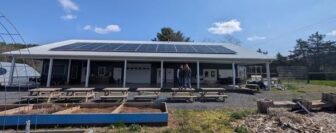 What can clean energy activists learn from the world of physics?
What can clean energy activists learn from the world of physics?
For starters, they might consider a well known precept called the law of the conservation of energy. Simply put, it states that energy can neither be created nor destroyed; it’s forever undergoing conversion from one state to another. For instance, for much of the past 200 years we’ve been converting the chemical energy in fossil fuels into the mechanical and electrical energy we need to power our cars and homes.
Of course, by now we know that CO2 pollution from these energy conversions has started to result in the conversion of the sun’s energy into some not so useful forms like hurricanes and wildfires. In addition to electricity, we’ve generated climate change and to make things right we need to quickly accelerate a different type of conversion: the switch from a dirty energy economy to one powered by clean sources like wind and solar.
Turns out though this is much easier said than done. And that’s not to say we’re lacking the technology; because we certainly aren’t. Rather, the problem stems from an extension of the law of the conservation of energy; a hybrid law that emerges where physical and political science meet. I call it the law of the conservation of energy policies. This law says that the type of energy that goes into our political system determines the type of energy that comes out. Don’t put enough grassroots energy in; you won’t get sufficient clean energy policies coming out. This is a big reason why to date we haven’t gotten the climate and clean energy policies we need. More energy has been flowing into our political system from fossil fuel companies than from grassroots activists.
To start winning on clean energy, then, we activists need to seriously amp up our movement. But we also want to make sure we’re applying our energy where it’s the most effective, and for the next few years during a climate-denier filled Congress, that may mean the state level. In Maryland for instance we could help jumpstart a national offshore wind energy revolution by developing the state’s abundant offshore wind resources. That’s why my organization the Chesapeake Climate Action Network is teaming up with a coalition of groups to pass a wind energy bill in 2011 that will help the state get 1,000 Megawatts of offshore wind energy by 2015.
Click here to keep reading.




